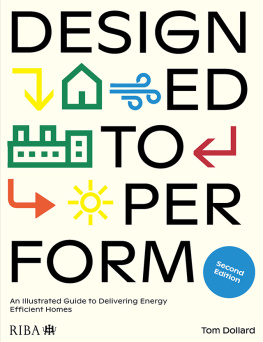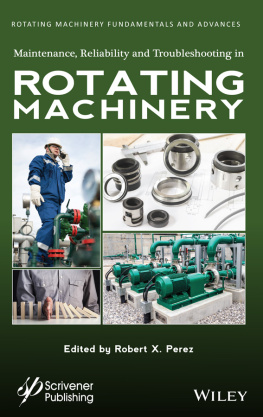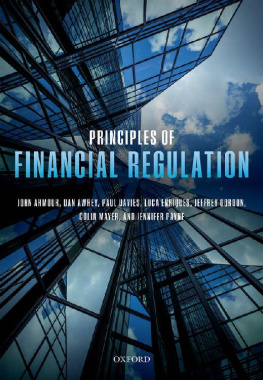SAFE DESIGN AND CONSTRUCTION OF MACHINERY
Safe Design and Construction of Machinery
Regulation, Practice and Performance
ELIZABETH BLUFF
The Australian National University, Canberra, Australia
ASHGATE
Elizabeth Bluff 2015
All rights reserved. No part of this publication may be reproduced, stored in a retrieval system or transmitted in any form or by any means, electronic, mechanical, photocopying, recording or otherwise without the prior permission of the publisher.
Elizabeth Bluff has asserted her right under the Copyright, Designs and Patents Act, 1988, to be identified as the author of this work.
Published by
Ashgate Publishing Limited
Wey Court East
Union Road
Farnham
Surrey, GU9 7PT
England
Ashgate Publishing Company
110 Cherry Street
Suite 3-1
Burlington, VT 05401-3818
USA
www.ashgate.com
British Library Cataloguing in Publication Data
A catalogue record for this book is available from the British Library
The Library of Congress has cataloged the printed edition as follows:
Bluff, Elizabeth.
Safe design and construction of machinery : regulation, practice, and performance / by Elizabeth Bluff.
pages cm
Includes bibliographical references and index.
ISBN 978-1-4724-5077-7 (hardback) ISBN 978-1-4724-5078-4 (ebook) ISBN 978-1-4724-5079-1 (epub) 1. Machine design. 2. MachinerySafety measures.
I. Title.
TH230.B597 2015
621.8150289dc23
2014041051
ISBN 9781472450777 (hbk)
ISBN 9781472450784 (ebk-PDF)
ISBN 9781472450791 (ebk-ePUB)
About the Author
Elizabeth Bluff has 30 years experience in occupational health and safety (OHS) and risk management. She is a Director of the National Research Centre for OHS Regulation in the Regulatory Institutions Network, at The Australian National University where she also holds an appointment as a Research Fellow. She has a Bachelor of Science (Hons) from the University of Adelaide, a Masters of Applied Science (OHS) from the University of Ballarat and a PhD in OHS regulation from Griffith University, Queensland.
Contents
List of Figures and Tables
Figures
Tables
List of Abbreviations
|
|---|
ABS | Australian Bureau of Statistics |
ANSI | American National Standards Institute. |
ASCC | Australian Safety and Compensation Council |
ASSE | American Society of Safety Engineers |
AWCBC | Association of Workers Compensation Boards of Canada |
BSI | British Standards Institution |
CE | Certification Europe |
CEN | European Committee for Standardization |
CENELEC | European Committee for Electrotechnical Standardization |
CSA | Canadian Standards Association |
DIISRTE | Department of Industry, Innovation, Science, Research and Tertiary Education (Australia) |
DTI | Department of Trade and Industry (UK) |
EC | European Community |
FEM | Federation of European Materials Handling |
HSE | Health and Safety Executive (UK) |
HWSA | Heads of Workplace Safety Authorities (Australia) |
ILO | International Labour Organization |
IRC | Industrial Relations Commission |
ISO | International Organization for Standardization |
KAN | Kommission Arbeitsschutz und Normung (Germany) |
NIOSH | National Institute for Occupational Safety and Health (US) |
NOHSC | National Occupational Health and Safety Commission (Australia) |
OSHA | Occupational Safety and Health Administration (US) |
OHS | Occupational health and safety |
PPE | Personal protective equipment |
SAA | Standards Association of Australia |
SWEA | Swedish Working Environment Authority |
UK | United Kingdom |
US | United States |
VTHC | Victorian Trades Hall Council |
WRMC | Workplace Relations Ministers Council (Australia) |
Preface
This book deals with the inter-related themes of risk, regulation, business practice and performance, based on an in-depth study of safety in the design and construction of machinery. Why machinery because globally it takes a heavy toll in work-related deaths and injuries. Why design and construction because removing hazards and integrating control measures at the source is one of the most cost-effective ways to manage risks. This is well recognized in the growing number of public policy and regulatory initiatives addressing health and safety problems upstream, including the Australian and European regulatory regimes for machinery safety in focus in this research.
The book is, however, much more than an account of business performance and responses to regulation in a particular context. It takes a fresh look at capacity and motivation as central elements shaping business conduct, and their highly contextualized nature. It offers insights into the impact of state regulation alongside the influence of non-state actors in firms supply chains and networks.
This means that the book will appeal to an international audience from diverse backgrounds those interested in human factors and safety engineering, work and product safety, risk management, regulation and socio-legal studies, sociology of work, standard setting and enforcement, and professional or vocational education. And, across these multiple fields, readers may come to the book as researchers, specialists or practitioners, regulators and policy makers, educators or students.
The book itself is multidisciplinary. I hope that by integrating literature and theory from different disciplines with empirical findings about safety in machinery design and construction, the book will help build bridges between specialist, regulatory and practitioner bodies of knowledge and communities of practice. It is my belief that only by applying a multidisciplinary perspective to understanding how and why health and safety problems arise, can we hope to develop and implement effective solutions.
While conducting the research and writing this book I have been working at the National Research Centre for OHS Regulation (NRCOHSR), which is part of the Regulatory Institutions Network (RegNet) at the Australian National University. The manuscript undoubtedly benefitted from discussions with my NRCOHSR and RegNet colleagues, and members of our wider networks. I would like to thank especially four people who read and provided very welcome and constructive feedback on the manuscript at different stages of its development. They are: Professor Richard Johnstone at the Australian Centre for Health Law Research, Queensland University of Technology; Professor Bridget Hutter at the Centre for Analysis of Risk and Regulation, London School of Economics; John Braithwaite, Distinguished Professor and founder of RegNet; and my work health and safety colleague and very good friend Dr Clare Gallagher.
Next page







